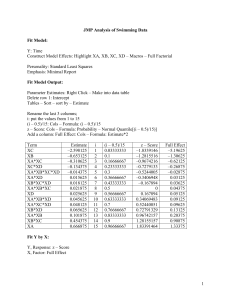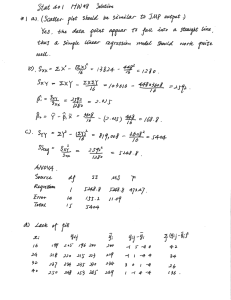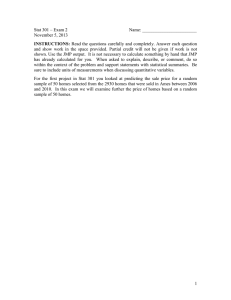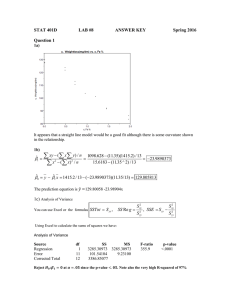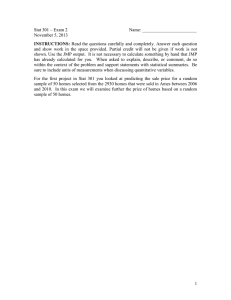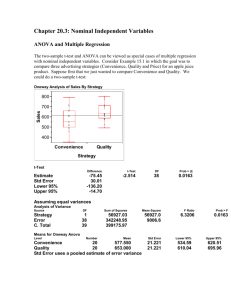A Look Backward at the Economic Development Objectives of
advertisement
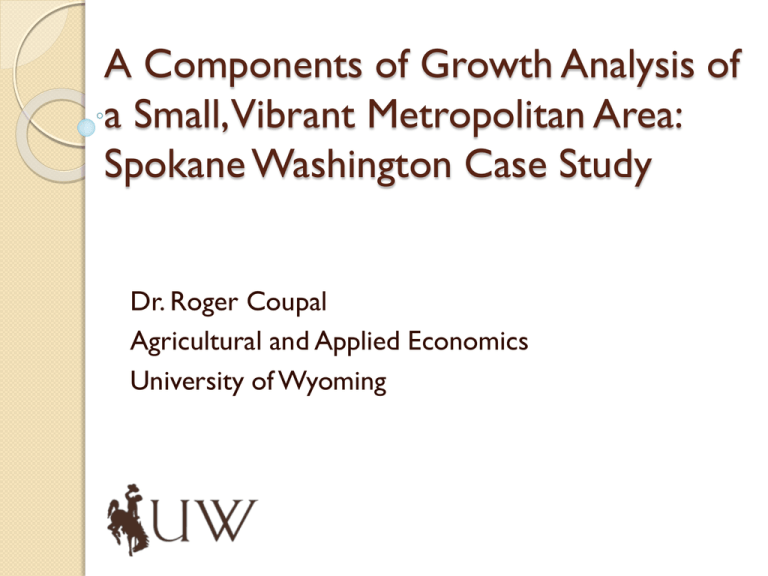
A Components of Growth Analysis of a Small,Vibrant Metropolitan Area: Spokane Washington Case Study Dr. Roger Coupal Agricultural and Applied Economics University of Wyoming Framework: Components of Income approach Based upon: Smith, G. (1996): Garnick, D.(1990) TPI/N = E/N + P/N + T/N + IA/N Components of Income approach: E/N = H/J + E/H + J/N N = Population TPI = Total personal income E = Earnings P = Property income T = Transfer payments IA = Income adjustments H = Hypothetical earnings J = Number of Jobs (full and part-time H/J = Industry mix component E/H = Differential Earnings Component J/N = job / population Ratio Energy Booms High Tech Mfg bust hart Energy Bust Y USE/J H/J E/J 50,000 Chart 40,000 Y Spokane Earnings / Job, Spokane Hypothetical Earnings / Job, and US Earnings / Job • Tends to trend the nation but at a lower level. • Do lower energy prices mean higher growth? • Growth during the high tech growth but flat during the energy boom. • Energy bust: an uptick. Y USE/J H/J E/J 50,000 30,000 2010 2008 2006 2004 2002 2000 1998 1996 1994 1992 1990 1988 1986 1984 1982 1980 1978 1976 1974 1972 20,000 1970 Y 40,000 year 2010 2008 2006 2004 2002 2000 1998 1996 1994 1992 1990 1988 1986 1984 1982 1980 1978 1976 1974 1972 20,000 1970 30,000 5/15/13 9:23 AM Job to population ratio, Spokane and the United States Chart Y 0.70 J/N USJ/N 0.65 0.60 Ratio 0.55 0.50 • Generally increased except during the lead up to the current recession • Spokane J/N tracked slightly higher since the mid-90’s • As a pct of the national 0.45 0.40 2010 2008 2006 2004 2002 2000 1998 1996 1994 1992 1990 1988 1986 1984 1982 1980 1978 1976 1974 1972 1970 0.35 year Chart 110.0% Job to population ratio as a percent of the US ratio Job to Pop Ratio 105.0% 100.0% 95.0% 90.0% 1973 1978 1983 1988 1993 year 1998 2003 2008 Industry Mix Component of relative per capita income and compared with earnings per Job, Pct Change from the preceding year Summary of Fit RSquare 0.58965 RSquare Adj 0.568606 Root Mean Square Error 0.013718 Mean of Response 0.017351 Observations (or Sum Wgts) 42 Parameter Estimates Term Estimate Intercept 0.0025275 IndMixGrth 0.031583 IndEarnGrth 0.5352067 Std Error 0.002962 0.158376 0.082951 Residual by Predicted Plot t Ratio 0.85 0.20 6.45 Prob>|t| 0.3986 0.8430 <.0001* Job ratio component of relative per capita income growth Summary of Fit RSquare 0.591299 RSquare Adj 0.57034 Root Mean Square Error 0.013691 Mean of Response 0.017351 Observations (or Sum Wgts) 42 Parameter Estimates Term Estimate Intercept 0.0138919 DifEarnGrwth 0.3862331 J/NGrwth 0.7684218 Std Error 0.002226 0.146913 0.103109 t Ratio 6.24 2.63 7.45 Prob>|t| <.0001* 0.0122* <.0001* Differential Earnings Growth Component of Relative PCI, Spokane 5/15/13 10:07 AM Chart Y DifEarnGrwth PCPIGrth 0.10 Pct Change 0.05 0.00 year Summary of Fit RSquare 0.233941 RSquare Adj 0.194656 Root Mean Square Error 0.018744 Mean of Response 0.017351 Observations (or Sum Wgts) 42 Parameter Estimates Term Estimate Intercept 0.0110054 DifEarnGrwth 0.4417462 IndMixGrth 0.7060462 Std Error 0.003577 0.215804 0.208765 t Ratio 3.08 2.05 3.38 Prob>|t| 0.0038* 0.0474* 0.0016* 2010 2008 2006 2004 2002 2000 1998 1996 1994 1992 1990 1988 1986 1984 1982 1980 1978 1976 1974 1972 1970 -0.05 Ù pcpi t = m + f pcpit -1 - pcpit - 2 Model: AR(1) Model Summary DF 41 Sum of Squared Errors RSquare RSquare Adj MAPE MAE Stable : Invertible: 15881057.7 0.91296883 0.91084611 1.74134482 580.072929 Yes Yes Parameter Estimates Term Lag Estimate Std Error t Ratio AR1 Intercept 0.009 4695.124 101.39 7.43 1 0 0.993 34896.543 Prob>|t| <.0001* <.0001* Constant 254.408251 ÑPCPI = f (ÑIndMix,ÑE / J, ÑJ / N,ÑUSJ / N) Summary of Fit RSquare 0.675913 RSquare Adj 0.640877 Analysis of Variance Parameter Estimates Term Estimate Intercept 0.0061186 IndMixGrth -0.114912 E/JGrwth 0.554309 J/NGrwth 0.6939885 Std Error 0.022885 0.161848 0.144011 0.097906 USJ/N 0.042908 0.0075217 t Ratio 0.27 -0.71 3.85 7.09 0.18 Prob>|t| 0.7907 0.4822 0.0005* <.0001* 0.8618 Conclusions and Discussion • Slower growth in earnings per job than the national setting • Continued divergence between national hypothetical and local earnings • Less connection between the national and local conditions • More reliance on growth factors (J/N, etc.) • They type of national growth may or may not affect a metro area Methodological / Geographic considerations • We don’t know how other metro areas perform. • What is perhaps more important is whether capital flows facilitate more startups. • Firms within groups of like industries tend to cluster. What an economic development initiative would like is separate from what it can actually accomplish, through no fault of its own. Jeffrey City, Wy: Boeing branch plant location? Vet School, Medical School? Anything, please!!
